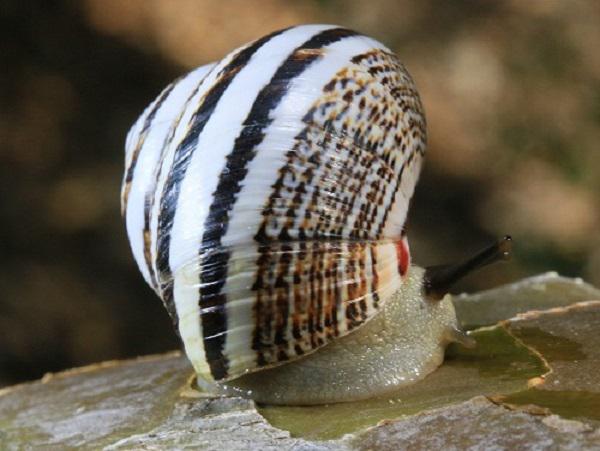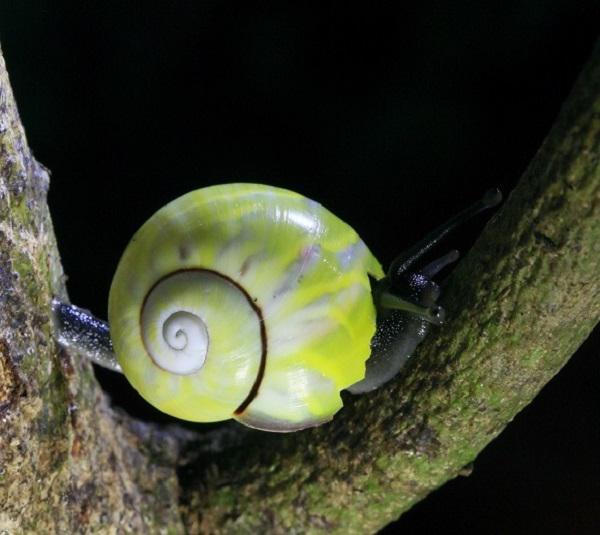Norvis Hernández Hernández
Other projects
10 Apr 2012
Updating Geographic Distribution and Habitat Conservation Status of the Land Snail Endemic Species Polymita picta and Polymita brocheri, Guantanamo, Cuba
The main aims of the project is to characterize general aspects of ecology and microhabitats populations of the Polymita versicolor and P. Sulphurosa, to implement guidelines for their management and conservation.

Polymita versicolor in trunk of Guayacan.
Cuban terrestrial mollusk fauna comprises 79 genera and 130 endemic subgenera exclusive to our island, among which is the Polymita (Beck, 1837), one of the most remarkable for the beauty and color variability of their shells, a situation that makes them vulnerable to their main predator, man. This genus is endemic of eastern of Cuba. There are known six species, almost all of them considered critical endangered. The knowledge of the conservation status of these emblematic species is based in data of some years ago.

Polymita sulphurosa is one of the most threatened, having a very restricted distribution with few populations. It lives in areas of sugarcane crops and pastures; none of its populations are in protected areas. Only five living populations are known and any natural or human disaster could cause their complete extinction.
Polymita versicolor, lives in semi-desert conditions, with intense solar radiation, high temperatures and low rainfall. Some populations of this species are extinct. This species is also under severe human pressure because indiscriminate collecting for making necklaces, which makes the situation even more critical for this low to almost rare endemic species of Cuba.
This project will update information on the geographic distribution and relative abundance of two endangered species of landsnail, Polymita versicolor and Polymita sulphurosa. Both species are found outside of protected areas. The data collected will be used for a proposal to the National Center for Protected Areas to create new protected areas inhabited by these species, as well as to promote environmental education in the communities where the species are found. Management plans for the proposed areas will be developed from information from this project.
We will promote environmental education in communities to raise awareness about the importance of both species and the urgent need for its conservation. By producing a documentary and other audiovisual materials, we will increase the awareness of the local population about the importance of the conservation of these beautiful snails and about the present danger of extinction affecting the genus in general. In addition, by printing educational materials in different languages for tourism agencies, customs officials, and airports, we will greatly mitigate the buying of these beautiful shells by foreign tourists.